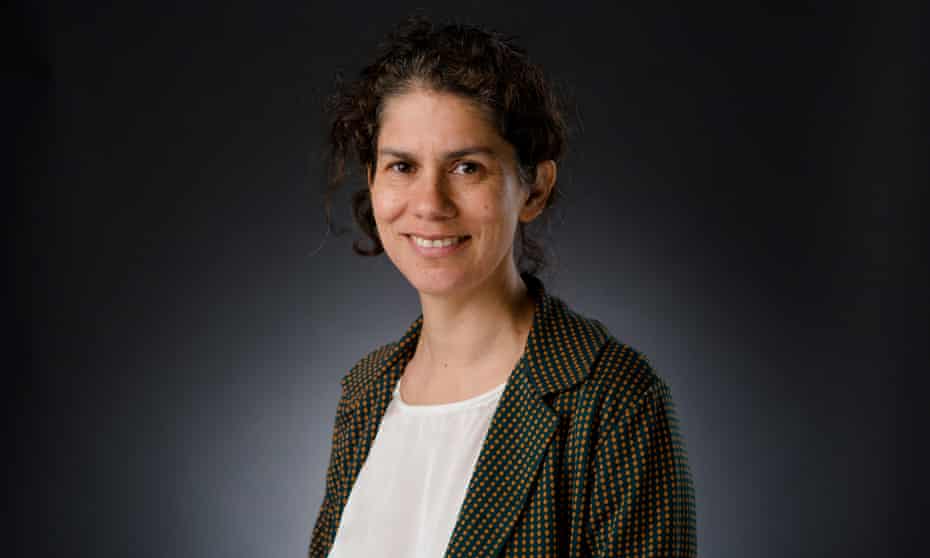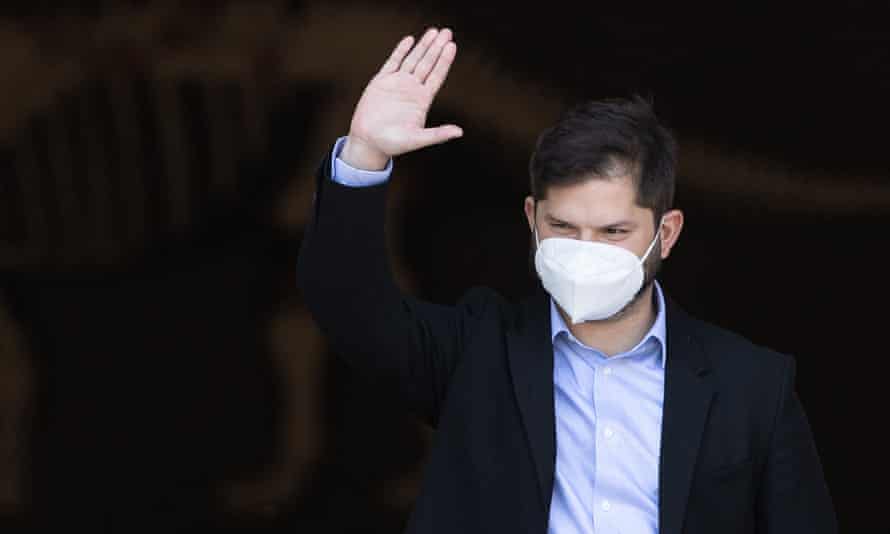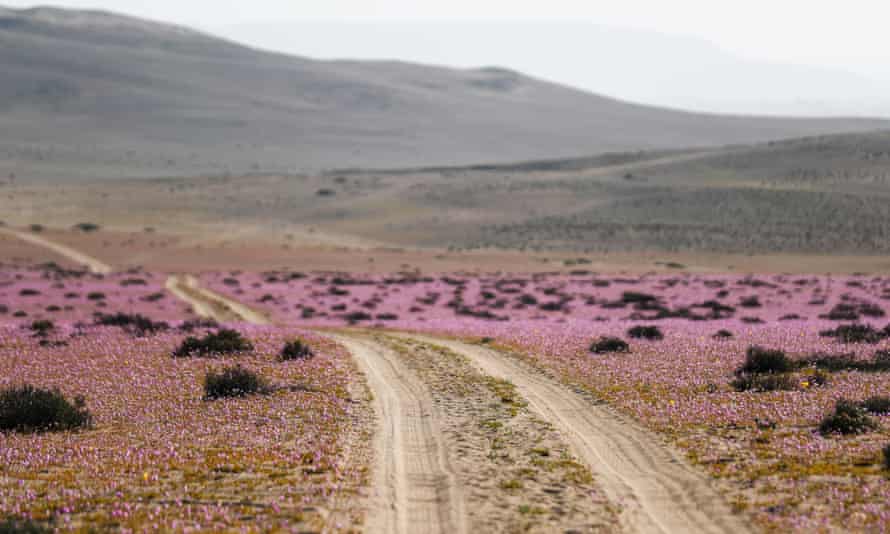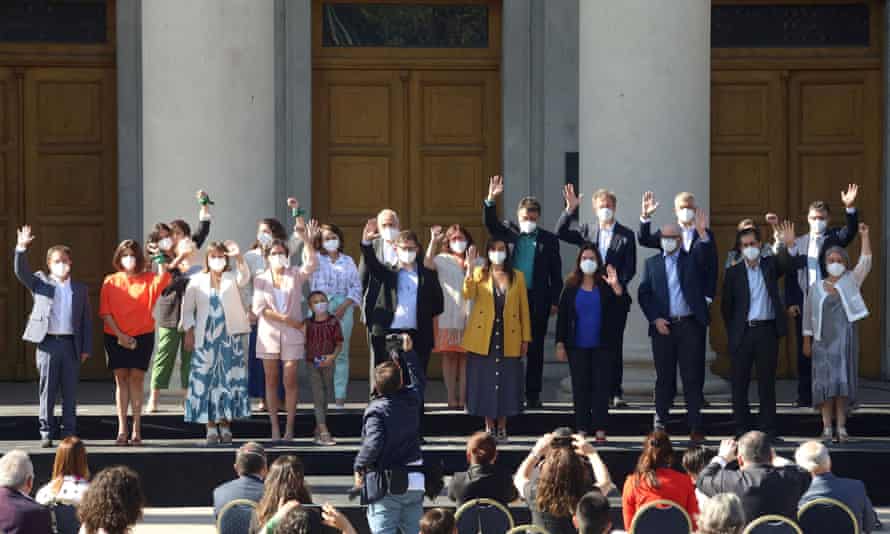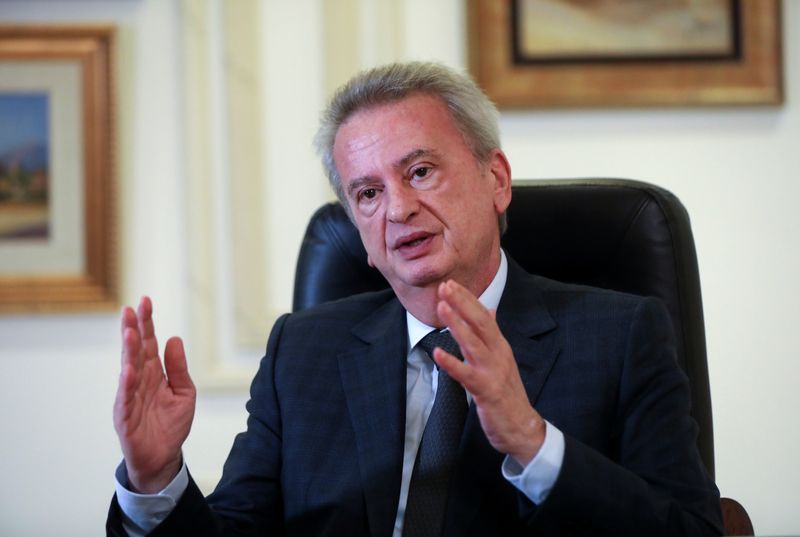
Emirates Team New Zealand’s prototype hydrogen foiling chase boat is in the final stages of a complex fit out prior to its launch in March.
The construction of the boat was started in August 2021 at the team’s North Shore build facility, the appendage construction is in its final stages and the Hydrogen Fuel Cell Powertrain installation is underway at the team’s base in Auckland’s Viaduct Harbour.
The ETNZ Hydrogen project powered by Toyota has been an important one for Emirates Team New Zealand who, as Defender of the America’s Cup, have committed to driving hydrogen innovation in the marine industry through working with clean technologies.
“The Hydrogen project has been a completely new challenge across the board for Emirates Team New Zealand designers, builders and engineers,” said Head of Design Dan Bernasconi. “These types of projects are extremely beneficial to keep the guys pushing the boundaries, continually learning and approaching problems with different perspectives, which all help to keep raising the bar in our design approach to the 37th America’s Cup which is also progressing in parallel.”
The prototype foiling boat is 10 metres in length, and approximately 5200kg displacement, the cruising speed will be 30-35 knots with a top speed of around 50 knots and will carry 6 crew members with a range of between 150-180km generating approximately 440kW peak power via a 400V DC system powered by the Hydrogen Fuel Cell.
“A project like this is not a straightforward one, and we have had to pull together a wide range of suppliers and components for this prototype boat, parts of which look like something out of Back to the Future,” explains Project Manager Geoff Senior.
“Toyota New Zealand and the Toyota Motor Corporation Japan have been a significant part of the project in supplying the 2 x 80kW pre-production Toyota Hydrogen Fuel Cells. Global Bus Ventures have supplied the Hydrogen Powertrain system design and integration and Gurit have been a valuable partner with the composite materials and engineering.”
The four hydrogen storage tanks onboard from Hexagon Purus will store 33kgs of hydrogen gas at 350bar while the propulsion is via a Mercury bottom end propellor which is embedded within the foils. The design of the foil wings by the Emirates Team New Zealand design team was largely based on AC75 technology and the Autopilot which will be used to control the ride height is ETNZ proprietary technology that will be implemented in the new AC40 boats in production.
Michael Rasmussen ETNZ Mechatronics Engineer said, “It is a learning curve for everyone involved, but it always is when we are driving technology into new territory. But with that comes really focused engagement from everyone involved to produce something we hope will reach the objectives we set out to achieve in driving a clean change in the global marine industry from down here in New Zealand.
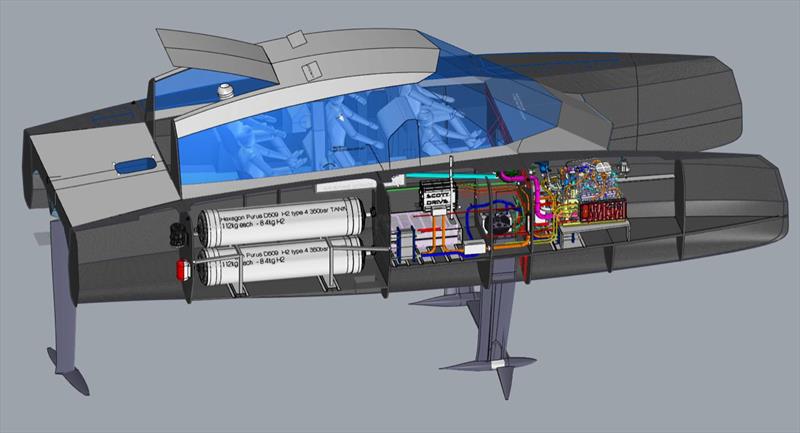
America's Cup hydrogen powered chase boat - photo © Emirates Team New Zealand
It will be an exciting yet stressful time once we are ready to get it out onto the water and put it to the test, which seems to be the way with every boat Emirates Team New Zealand creates.”
The prototype boat is expected to launch early next month and will be put through a thorough sea trial to work through all the complex systems involved to get the boat up and flying.
An integral supporter to The ETNZ Hydrogen project powered by Toyota is Emirates Team New Zealand Sustainability Ambassador and former Chair of Directors, Sir Stephen Tindall, who along with helping to fund the project also believes that strategically clean hydrogen will be a very important part of New Zealand’s green sustainability in future.
“Green hydrogen comes from renewable energy like wind, solar and hydro and once the hydrogen is used in the boat, the only by-product is water.” said Tindall.
“I believe our ambitious move into hydrogen boats by Emirates Team New Zealand will set the scene for motor driven craft as we did in starting the marine foiling revolution. I am looking forward to seeing millions of hydrogen driven vehicles and boats over the next 20 years.”
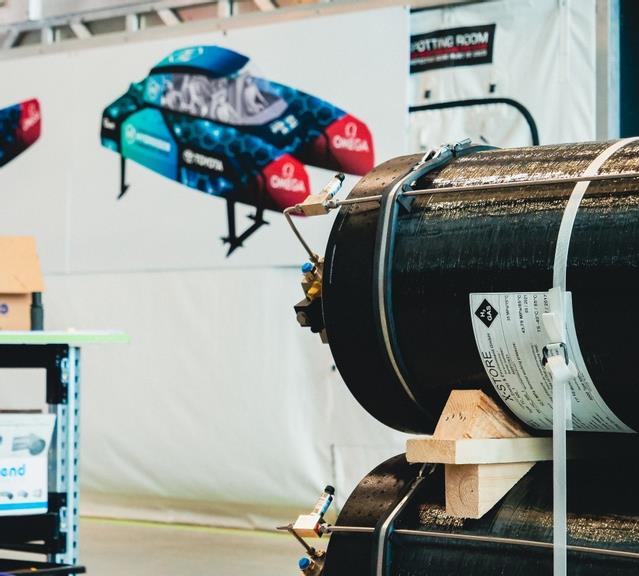
America's Cup hydrogen powered chase boat - photo © Emirates Team New Zealand

America's Cup hydrogen powered chase boat - photo © Emirates Team New Zealand

America's Cup hydrogen powered chase boat - photo © Emirates Team New Zealand
It's expected to debut in Dubai in November next year.
By RACHEL CORMACK
A “flying boat” may sound like an oxymoron, but a certain Swiss start-up is ready to prove otherwise.
The Jet ZeroEmission is launching what it claims will be the world’s first hydrogen-powered flying boat next year in Dubai. The startup has partnered with Zenith Marine and DWYN to build the new zero-emissions vessel, which has been fittingly christened the Jet.
With a futuristic, spaceship-like silhouette, the yacht will measure roughly 33 feet from tip to tail and is designed to carry up to 12 passengers and a captain. As its moniker suggests, it can soar like a jet, too.
That’s all thanks to the Jet’s hydrofoils, which will essentially lift it up 3 feet out of the water to ensure less resistance than a normal planing boat. Foiling also makes for a smoother ride with less wake since you’re flying above any choppy seas.

The Jet’s creator and designer, Alain Thébault, with a model of the flying boat. The Jet ZeroEmission
The Jet’s propulsion is just as forward-thinking. It will be equipped with two hydrogen fuel cells that will power the electric motors for quiet, emissions-free cruising at zippy speeds. According to the Swiss outfit, the Jet will reach around 18 knots during take-off and sit somewhere between 35–40 knots while cruising. It will mainly be dedicated to serving hotels and high-end clients, according to the brand.
It’s worth pointing out that pairing hydrofoils with hydrogen is not exactly a new concept. There has been a spate of designs that combine this bleeding-edge tech. In fact, Emirates Team New Zealand is building a hydrogen-powered foiling chase boat to support the AC75 racing yachts in the 37th America’s Cup.

The Jet can reach 40 knots at full tilt. The Jet ZeroEmission
Still, the Jet ZeroEmission is gaining serious momentum. The company, which is led by noted yachtsman Alain Thébault, has already secured part of the required funding of $11.4 million (€10 million). Thébault brings a wealth of experience to the project, too. The Frenchman previously designed and constructed a hydrofoil trimaran called L’Hydroptère in which he set a world sailing speed record back in 2009. As you might expect, he’s excited by his new projects.
“We are pleased to make this announcement from Dubai, and be able to manufacture and launch ‘The Jet’, which is going to be the world’s first boat to sail without noise, waves, or emissions,” Thébault said in a statement.
The Jet is slated to take its first flight during the COP28 UAE climate conference in Dubai in November 2023.
Check out more photos below:

The Jet ZeroEmission

The Jet ZeroEmission

The Jet ZeroEmission

The Jet ZeroEmission

The Jet ZeroEmission

The Jet ZeroEmission
Sanlorenzo Will Debut Its First Hydrogen-Powered Superyacht in 2024
The zero-emissions 164-footer has been earmarked for the CEO, naturally.
By RACHEL CORMACK

There’s been a lot of chatter about hydrogen-powered superyachts, but Sanlorenzo now has a concrete plan to get one to sea.
The Italian yacht builder, which is no stranger to innovation, has announced that it will deliver a 164-footer equipped with hydrogen fuel cells as soon as 2024. Sanlorenzo’s CEO Massimo Perotti is so confident in the design, in fact, that he is backing it himself, as reported by the Superyacht Times.
Perotti has bought the very first hull in order to fund the development and test the new technology before making it available for Sanlorenzo’s clients. Think of him as a very lucky test pilot. The CEO also confirmed that this will be the world’s first 164-foot motor yacht to feature the emissions-free technology.

Sanlorenzo’s CEO Massimo Perotti has bought the hydrogen-powered superyacht for himself. Wikimedia Commons
To help with the lofty endeavor, Sanlorenzo has signed an exclusive agreement with Siemens Energy. Together, the duo plan to more widely integrate fuel cells in the 79 to 262 foot (24–80 meter) yachting sector with a new generation hybrid (diesel-electric) propulsion system that will be showcased for the first time in the new superyacht.
So, how does it work? According to the yard, the hydrogen fuel cells will generate electricity from reformed methanol to power the vessel. This means that yachts fitted with this “Net-zero GHG emission” system will be able to produce clean, green energy even when the generators and engines are switched off. In turn, the vessels will rely less on diesel fuel while both at anchor and at sea to lower the overall environmental impact and increase efficiency.

Sanlorenzo’s SL120A—for Asymmetric—divides space differently than similar-sized motoryachts. Sanlorenzo/Thomas Pagani
It’s worth noting that the hydrogen setup will power the hotel load and not the propulsion system as that’s considered to be the most damaging when it comes to carbon emissions.
Sanlorenzo has not yet shared any details about the superyacht’s design, but the yard has been exploring asymmetrical designs more frequently with models like the SL120A. If this 164-footer is anything like the rest of the fleet, we should be in for a surprise.




